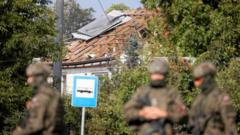A recent incident involving a Russian drone crossing into Polish airspace has brought renewed focus on the precarious security situation along NATO’s eastern flank. The fundamental question surrounding this event is whether it represents an inadvertent navigation error or a deliberate act of probing by Moscow. Regardless of the underlying intent, the incursion has transformed into a critical examination of the North Atlantic Treaty Organization’s preparedness and resolve.
Analysts suggest that Russia will be meticulously observing NATO’s reaction to this airspace violation. Moscow’s interest likely lies in understanding the alliance’s speed of response, its decision-making processes, and any potential divisions among member states. A robust and unified response from NATO would reinforce its deterrent posture and signal a strong commitment to collective defense principles, particularly Article 5. Conversely, any perceived hesitation or fragmentation in the alliance’s reaction could be interpreted as a weakness, potentially encouraging further, more aggressive actions in the future.
For Poland, a frontline NATO member directly bordering Russia and Ukraine, such infringements of its sovereign territory carry significant weight. The incident compels NATO leadership to carefully calibrate its diplomatic and operational responses, balancing the need for de-escalation with the imperative of safeguarding alliance territory. This episode underscores the persistent geopolitical tensions in the region, highlighting the ongoing requirement for vigilant air defense systems, clear communication channels, and unwavering solidarity among NATO members to counter evolving threats effectively.



